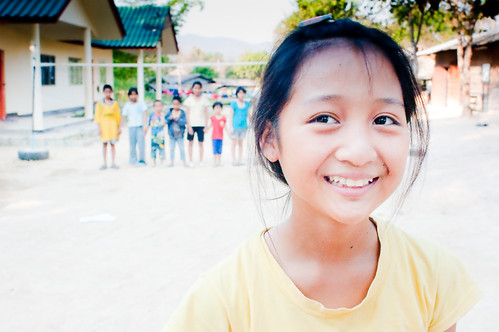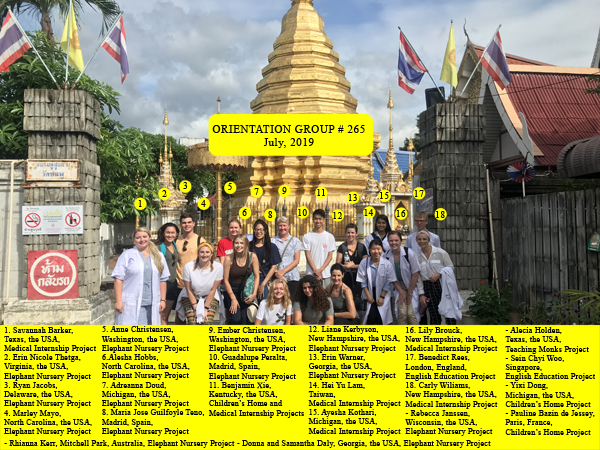Thinking about volunteering abroad? Here are 10 critical considerations worth keeping in mind while looking for a worthwhile project that is right for you:
1. Safe and Available Volunteer Transport
Daily transport to / from your accommodation and project sites is a big deal. It’s not something that most people think about when checking out international volunteer and intern placements. However, this can be a major issue once you’re in-country. The commute for some placements can be over an hour in one direction and cost a lot of additional money. Don’t make sitting in the back of a hot, dirty bus one of the defining memories of your volunteer experience. Walking to the project site is normally not possible. But, when checking into different projects, do take this into strong consideration.
2. Program Coordination
Living and working in a very different cultural setting is a challenge. Program Program placement and coordination to support your program is absolutely key. If coordination is unprofessional, hours away, or un-reachable, then your whole program experience can fall apart. It’s important to know who will be overseeing your program, what their role in your experience will be, how often you will interact with the coordinator and what steps are required to contact them in the event that a problem arises. Strong project coordination and support go a long way toward ensuring that issues are dealt with swiftly and appropriately.
3. Coordinating Staff Professionalism
Staff professionalism and experience are essential components in a well-run program. Are the coordinators that will be overseeing your program experienced and well-trained? Are they new to the team, or have they been working with volunteers for many years? The “About Us” page of most organizations’ websites should provide pictures and bios of staff. If looking to engage in a well-arranged, professional project, then it’s wise to avoid organizations with “About Us” pages that provide what amounts to immature selfies taken at a bar, or sitting on the beach and passes them off as professional staff photos. Remember, these individuals will ultimately be responsible for dealing with programming conflicts, medical issues and any other situations that arise during program abroad. It’s important to know that you are not stealing them away from the bar to help you if you find yourself very sick late at night.
4. Proper Volunteer and Intern Orientation
A proper orientation and introduction shows you that your hosting organization really wants you to succeed. How can an individual be expected to arrive into a foreign country and jump right into their project without knowing at least some of the most important details and strategies for success? Language, cultural and technical training / orientation should be provided to all incoming participants. Otherwise a system of reciprocal failure results, and projects do not last long.
5. Proper and Thorough Application and Vetting Process
Hosting organizations that insist on vetting potential applicants through a full-fledged application process and background check do so with the intent to establish who you are and why you are coming to take part in their programs. It shows that they genuinely care about the project sites, and not just your program fees. Admittedly, an application process can sometimes seem boring and unnecessary at times. However, it’s extremely important. Organizations that do not require volunteers to submit background checks before working with children either doesn’t know what they are doing, or they don’t care about the kids at the project site. Either way, that’s not an organization or project that you want to be associated with. Hosting organizations know that submitting documents and paperwork is tedious, time-consuming and sometimes expensive. However, it’s important that hosting organizations look out for best interests of the people volunteers are coming to serve. Volunteers should view these steps as an important means of running quality projects and caring for all involved.
6. Volunteer Skills and Experience
Look for projects for which you have relevant skills and experience. Understandably, some volunteers wish to do step out and do something totally different while they travel. In order to maximize their contribution and get the most out of a project, we recommend that applicants stick to what they are good at or have experience in. If you are good with kids, then a project working with children or teaching will be best for you. If you are handy with fixing and building things, then participating in a construction or renovation project may be best.
7. Safety of Program Location
Check out regions and places where you would be comfortable traveling by yourself. If traveling internationally for the first time, then it’s best to travel to a place where you feel safe. Hosting organizations (should) provide support, information, project programming, orientation and accommodation. However, they are not responsible for everything and everywhere you go during your time in the country. Looking for a safe country in which to engage in your first experience abroad provides an extra layer of protection, and peace of mind to your friends and family back at home.
8. Hosting Organization’s Background
Get a feel for the placement organization and read up on who they are, and what what they provide. Is the organization a for-profit company, or a non-profit foundation? Be skeptical if their website features what appear to be stock photography and limited useful content. Likewise, it’s not a good sign if recruitment staff is slow in responding to your messages. Take your time to research a potential hosting organizations, checking out their videos, photographs and other relevant information – not just on their own site, but on third-party websites as well. A great place to check up on and connect with previous volunteers and interns of an organization is LinkedIn. Many volunteers and interns will list their program on their LinkedIn resume, which is easily searchable. This will help provide you with peace of mind regarding the benefits and support provided for a particular placement.
9. A Dynamic and International Atmosphere
Inquire to see how many other like-minded volunteers will be in the projects during your placement. Getting to know locals and forging friendships in the host country is a highlight of any volunteer or intern abroad project. However, sharing your experience with other international volunteers and interns also has its rewards. Particularly, it will help you process your experience while also learning about the experience of other volunteers in different placements.
10. Activities and Excursions
Plan activities for weekends and down time. Most volunteer projects run from two to four weeks and usually only from Monday to Friday. Joining in activities, short trips and weekend excursions is a great way to enhance the experience. Placements in rural areas can provide intense opportunities in cultural immersion. However, rural areas offer less to do during weekends and down time. Cities have more to offer in terms of visiting museums, taking part in adventure activities and checking out historical sites.









